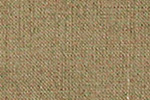

Call us at 707-433-4238 or toll free 888-471-4448
 |
 Call us at 707-433-4238 or toll free 888-471-4448 |
|
Home
Stretcher Bars
Art Panels
Art Fabrics
Canvas Pliers
Floater Frames
Artist Services
About Us
|
Fine Linen Fabrics for your art supports | |||||||||||||||||||||||||||||
|
"Through history French painters had traditionally painted on strong and durable fabrics—hemp and linen, and the transition from hemp to linen painting canvases had occurred smoothly; and artists were aware that cotton fabrics were not as well adapted as hemp and linen ones to use as supports for paintings. Cotton is weaker than the two other fibers and much weaker when wet; it will also not resist bacterial growth as well. Only in the late 1800s did painters begin to paint on cotton canvases, because linen fabrics had by then become much more expensive. Even today, artists who are concerned with the durability of their works still favor linen over cotton when it is available and affordable." - A Study of French Painting Canvases by K. V. Carbonnel. Beware of big, heavy linen fabrics that look impressive and feel substantial. Just like the finest bedsheets, you want more threads per inch, so you need linen made from threads that are consistently thin. Some manufacturers sell oil primed linen where the gauge of the thread is thinner in one direction than the other - that means that the only way you can prevent ripple in the fabric is to stretch tighter in one direction than the other - and that's very difficult to do! That's why we avoid offering such products. Here at John Annesley Company we carry a wide range of linens. From unprimed linens, or our L60 linen that has only a rabbit skin glue coating, to the L64C linen with four coats of oil ground on a very delicate but durable linen. It has the luscious feel of calf-skin glove leather. We will stretch any of these fabrics over any of our stretcher bars, cradled panels, or strainers. Or you can purchase whatever fabric you need - by the piece, by the yard or by the roll. Then you can use our canvas pliers and stretch it yourself. In addition to linen, we have: Oil Ground or Acrylic Gesso Ground?If you're trying to decide between an acrylic ground or an oil ground, you should take into consideration whether you're using oil paints or not. We encourage our customers to create paintings in a "compatibly organic" environment. Flax is used to make linen. Flax seed is used to make linseed oil, linseed oil is used in making oil paints. An oil painter should be starting with linen, using a rabbit skin glue sealer, using an oil ground, and then using oil paints. This creates a compatibly organic environment for your oil painting. Acids from the color pigments are much less likely to damage the art support. Using an oil ground on linen means that you'll have better paint adhesion, the first layers of paint are absorbed into the ground. The use of glazes means the underpainting will glow from the inside out. Thicker applications of paint on an oil ground underpainting means you can scrape back to the stained ground color. You can paint oil on an acrylic ground, but the paint will just sit on the surface, not bond with the ground. An acrylic ground is best for acrylic paints, it creates a chemically compatible bond. You cannot use acrylic paints with an oil ground ever. It won't adhere. The universal ground offered on many of our linens and on both polyester fabrics is a compromise. It has two coats of sizing glue that protects the fabric, then is coated with acrylic gesso. However, unlike "glossy" acrylic primers, its surface is more matte and a bit more asorbent. It is excellent for oil paints, acrylic paint, egg tempera, casein, and even drawing media..and excellent general purpose surface coating. Both acrylic and oil painters are choosing to use fabrics with universal primer. |
Artfix Belgian All-Purpose LinenL21C and L22U have a strong and tight weave that is virtually adaptable to any style of painting. The texture of these art fabrics is similar to commercial-grade cotton canvases. Click on image to ZOOM.
Artfix Belgian Fine Portrait LinenL64C and L64U are fine Belgian portrait linens with a very tight weave and very fine, even grain. Four layers of primer are hand applied and sanded, care that can prevent peeling, flaking or crackingif applied using professionally accepted standards.
Three Unprimed Linen Fabrics
| ||||||||||||||||||||||||||||
 | |
| Unprimed Irish Linen - L3151 tight weave, soft hand 88" wide - 316 gm/m |
 |
 |
| Unprimed Linen - L99120 traditional, a little toothy 120" wide - 305 gm/m2 |
Unprimed Linen - L5888 portrait-grade 88" wide - 205 gm/m2 |
|
Annesley Website Site Map
Home Page E-mail Us Directions Links Conservators FAQs Art Supports Normal Duty Stretcher Bars Heavy Duty Stretcher Bars Expansion Bolt Stretcher Bars Cradled Panels Plein Air Panels Strainers Floater Frames Art Fabrics Linen Fabrics Polyester Fabrics Cotton Canvas Fabrics Supplies/Tools/Services Canvas Pliers Instructional Media Digital Grange Fabric Stretching Mounting Pricing Info Cradled Panel Prices Strainer Prices Stretcher Bar Prices Expansion Bolt Stretcher Bar Prices Art Fabric Prices Fabric Stretching Prices Floater Frame Prices Plein Air Panel Prices Artist Gallery - Artist Studio Tours www.JohnAnnesley.com e-mail: [email protected] 707-433-4238 toll free 888-471-4448 fax 707-433-1831 Store hours (PST): M-F 10am - 6pm; Weekends by appointment 259 Brandt Road PO Box 181 Healdsburg,CA 95448 Click here for Directions © 2014, John Annesley. All rights reserved. |